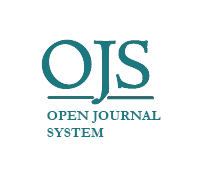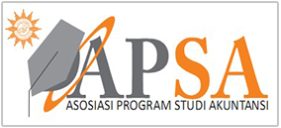Determinants of Student Interest to Become Entrepreneurs
DOI:
https://doi.org/10.22219/jrak.v11i2.17541Keywords:
Empathy Ability, Entrepreneur , Experience, Moral Obligation, Social SupportAbstract
This research aims to determine the factors that encourage student intention to become an entrepreneur. The population of this research is students in Indonesia. The research sample was undergraduate students (S1). Sampling in this research using convenience sampling. Collecting data in this research using a survey method which is carried out by distributing electronic questionnaires (google form) to respondents. The sample of this research is 126 people. Data analysis techniques in this research using Partial Least Square with the help of the WarpPLS tool. This research found that experience in entrepreneurship affects empathy, capital obligations, social support and efficacy (entrepreneurial ability). Meanwhile, the intention to become an entrepreneur is influenced by religiosity, self-efficacy, and social support. However, moral obligation and empathy have no effect on the intention to become an entrepreneur
Downloads
References
Ajzen, I. (2002) ‘Perceived behavioral control, self-efficacy, locus of control, and the theory of planned behavior’, Journal of Applied Social Psychology, 32(4), pp. 665–683.
Audretsch. D. Boente, W. & T. J. (2007) ‘Religion and entrepreneurship’.
Bagheri. A. & Pihie. Z. A. L (2009) ‘An Exploratory Study of Entrepreneurial Leadership Development of University Students’, European Journal of Social Sciences., XI (1).
Bandura. A (1977) ‘Self-efficacy: Toward a unifying theory of behavioral change’, Psychological Review, 84(2, pp. 191–215.
Batson. C. . Early. S. & Salvarani. G (1997) ‘Perspective taking: Imagining how another feels versus imaging how you would feel’, Personality and Social Psychology Bulletin, 23(7), pp. 751–758.
Bornstein. D (1996) ‘The price of a dream, The story of the Grameen Bank’, University of Chicago.
C. Agustina & L. Sularto (2011) ‘Student Entrepreneurship Intentions (Comparative Study between the Faculty of Economics and the Faculty of Computer Science.’, Proceeding PESAT (Psikologi, Ekonomi, Sastra, Arsitektur, & Sipil), IV, pp. 63–69.
Cialdini. R. . Reno. R. . & Kallgren. C. (1990) ‘A focus theory of normative conduct: Recycling the concept of norms to reduce littering in public places.’, Journal of Personality and Social Psychology, 58(6), pp. 1015–1026.
Coff. R. (1999) ‘When competitive advantage doesn’t lead to performance: The resource-based view and stakeholder bargaining power’, Organisation Science, 10(2), pp. 119–133.
Dees. J. (2012) ‘A tale of two cultures: Charity, problem solving, and the future of social entrepreneurship’, Journal of Business Ethics, 111(3), pp. 321–334.
Ernst. K. (2011) ‘Heart over mind–An empirical analysis of social entrepreneurial intention formation on the basis of the theory of planned behaviour’, Unpublished Dissertation, University Wuppertal.
Fauzan (2014) ‘Relationship of Religiosity and Entrepreneurship: An Empirical Study in Islamic Perspective’, Jurnal Ekonomi MODERNISASI, 10(2), p. 147. Available at: https://doi.org/10.21067/jem.v10i2.779.
Flora Siagian. R. E. (2015) ‘The Influence of Students' Interests and Study Habits on Mathematics Learning Achievement’, Formatif: Jurnal Ilmiah Pendidikan MIPA, 2(2), pp. 122–131. Available at: https://doi.org/10.30998/formatif.v2i2.93.
Gist. M. . & Mitchell. T. (1992) ‘Self-efficacy: A theoretical analysis of its determinants and malability.’, Academy of Management Review, 17(2), pp. 183–211.
Goetz. J. . Keltner. D. & Simon-Thomas. E. (2010) ‘Compassion: An evolutionary analysis and empirical review’, Psychological Bulletin, 136(3), pp. 351–374.
Goleman. D. (1996) ‘Emotional Intelligence. PT. Gramedia Pustaka Utama.’
Groch. K. Gerdes. K. . Segal E. . & Groch. M (2012) ‘The grassroots londolozi model of African development: Social empathy in action’, Journal of Community Practice, 20(1-2), pp. 154–177.
Hemingway. C (2005) ‘Personal values as a catalyst for corporate social entrepreneurship’, Journal of Business Ethics, 60(3), pp. 233–249.
Hermina. U. N. Novieyana. S. & Zain. D. (2011) ‘The Influence of Entrepreneurship Courses on Students' Interest in Becoming Entrepreneurs in the Pontianak State Polytechnic Business Administration Study Program.’, Jurnal Eksos, (7) 2, pp. 130–141.
Jadmiko., P. (2019) ‘The Mediating Role of Attitude Becoming Social Entrepreneur (Atb) on the Effect of Empathy on Interest in Social Entrepreneurship’, Jurnal Benefita, 4(3), p. 422. Available at: https://doi.org/10.22216/jbe.v4i3.4617.
Jianfeng. L. Hongping. L. & Lanying. D. (2009) ‘The effect of religiosity on shopping behavior: An exploratory study during the transitional period in China 2009’, 2009 International Conference on Information Management, Innovation Management and Industrial Engineering, ICIII 2009, 2(August), pp. 31–34. Available at: https://doi.org/10.1109/ICIII.2009.165.
Jogiyanto. H. & Abdillah. W. (2014) ‘Concepts and Applications (Partial Least Square) for Empirical Research’, Yogyakarta, Indonesia: BPFE UGM, Edisi 1.
Koe Hwee Nga. J. & Shamuganathan. G. (2010) ‘The influence of personality traits and demographic factors on social entrepreneurship start up intentions’, Journal of Business Ethics, 95(2), pp. 259–282.
Kohl. J. P (1984) ‘Strategies for growth: Intervention in a church’, . Long Range Planning, 17(6), pp. 76–81.
Makhbul. & Hasun. (2011) Enterprising Communities: People and Places in the Global Economy., 1(2). Available at: https://doi.org/DOI 10.1108/17506200710752584.
Rahayu (2019) http://papers.ssrn.com/sol3/papers.cfm?abstract_id=1136703.
Downloads
Published
Issue
Section
License
Copyright (c) 2021 Kahfi Fikrianoor, Agung Dwi Nugroho, Faishal Prahatma Ganinda, Amir Hidayatulloh

This work is licensed under a Creative Commons Attribution 4.0 International License.

Jurnal Reviu Akuntansi dan Keuangan is licensed under a Creative Commons Attribution-NonCommercial-ShareAlike 4.0 International License.
Authors who publish with this journal agree to the following terms:
- Authors retain copyright and grant the journal right of first publication with the work simultaneously licensed under a Creative Commons Attribution-NonCommercial-ShareAlike 4.0 International License that allows others to share the work with an acknowledgement of the work's authorship and initial publication in this journal.
- Authors are able to enter into separate, additional contractual arrangements for the non-exclusive distribution of the journal's published version of the work (e.g., post it to an institutional repository or publish it in a book), with an acknowledgement of its initial publication in this journal.
- Authors are permitted and encouraged to post their work online (e.g., in institutional repositories or on their website) prior to and during the submission process, as it can lead to productive exchanges, as well as earlier and greater citation of published work (See The Effect of Open Access).










